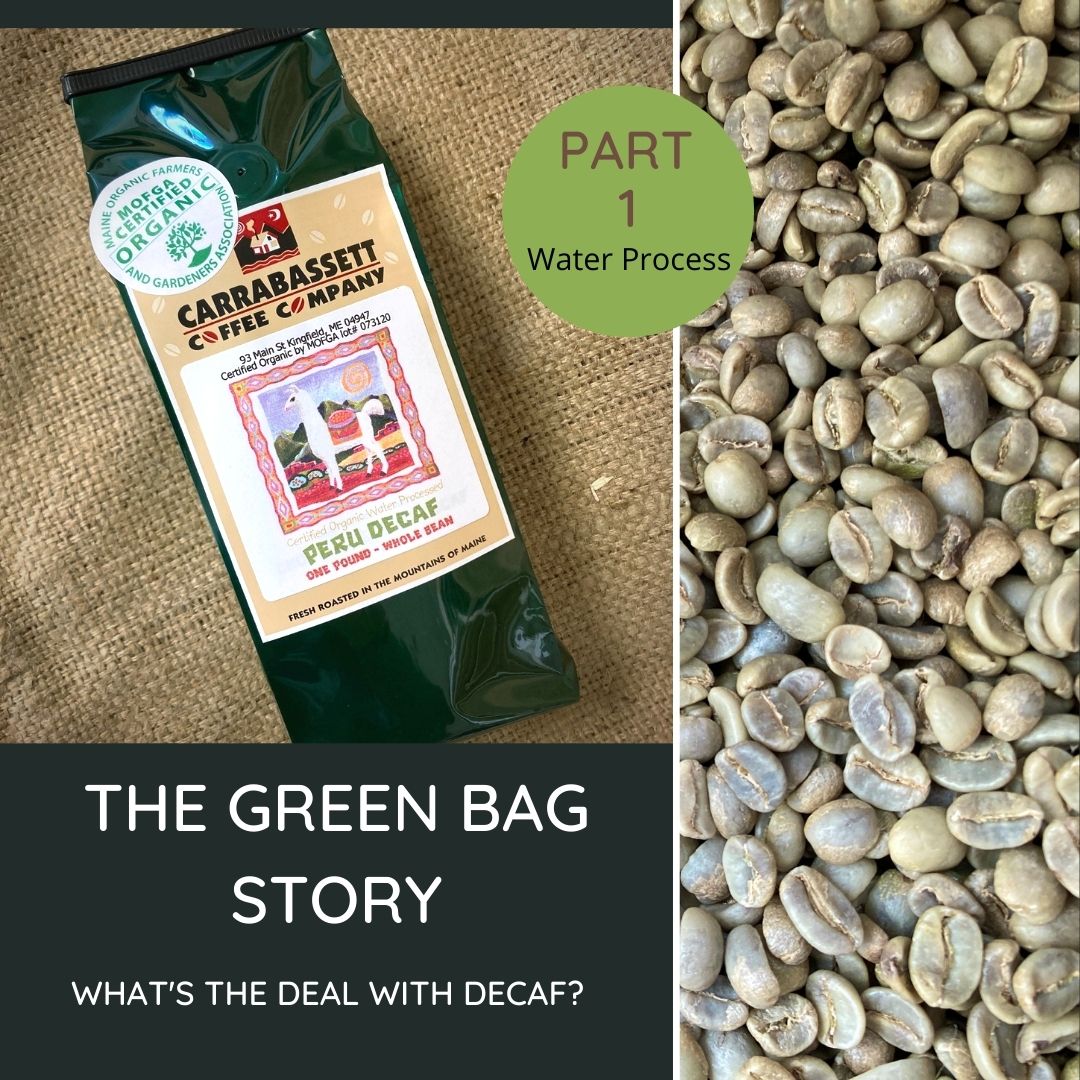
There are no coffee beans that grow caffeine-free, so decaffeinating coffee is something that must be done manually after the coffee is harvested (but before the coffee is roasted). According to the FDA, a coffee needs to be 97% caffeine free in order to be considered “decaf.” The challenge in decaffeinating coffee is to remove the caffeine without removing any of the other chemical properties, which lead to the distinctively bold taste of the coffee beans.
Decaffeinating methods can be split into two categories: Solvent-Based and Water-Process. We will focus on Water-Process in this article. Details on Solvent-Based decaffeinating processes will be forthcoming in future articles.
All of our organic decaf coffees, here at Carrabassett Coffee Company, have been processed using a water-based method called the “Swiss Water Process” or the “Mountain Water Process” or, more simply, the “Water Process”. This is because decaffeinating solvents (chemical agents used to remove caffeine, but maintain other naturally occurring chemical elements in the green coffee bean), do not fall under the MOFGA guidelines for Organic products.
How the Water Process Works:
The Water Process relies on the scientific principles of solubility, osmosis, and saturation.
First, a batch of green coffee beans are soaked in very hot water. Caffeine is water-soluble, so the hot water dissolves the caffeine. This means the caffeine molecules move from the beans into the hot water. The hot water also dissolves oils, proteins, sugars, and other flavor molecules from the green beans.
The water is then drained through an activated charcoal filter into a separate holding tank. The filter captures the larger caffeine molecules, but allows the flavor molecules and oils to pass through with the water.
After passing through the filter, the water in the holding tank is now decaffeinated and saturated with green coffee flavor molecules (called “Green Coffee Extract”.) The original batch of green coffee beans is now caffeine-free, but it also completely lacks flavor, since all the flavors are in the extract. The green beans from this first batch are discarded. The Green Coffee Extract is saved to remove the caffeine from the next batch of beans.
Because the Green Coffee Extract is so saturated with coffee flavor molecules, the flavor molecules from the new green coffee beans cannot dissolve. As you’ll recall, the Green Coffee Extract is caffeine-free, so the caffeine can move from the beans to the water, but the majority of the flavors remain in the beans.
Many coffees decaffeinated using the Water Process are audited at 99.9% caffeine-free, so the process is very effective at removing caffeine. Want to test out the flavors of a decaffeinated water process coffee yourself? Try one of the decaf coffees below!
Decaf Organic Peru
Decaf Organic Timberline
Decaf Organic Gondi Line
Decaf Java Joe’s Organic Espresso


